Unit 731 ruins and sites of Japanese army seen in Harbin
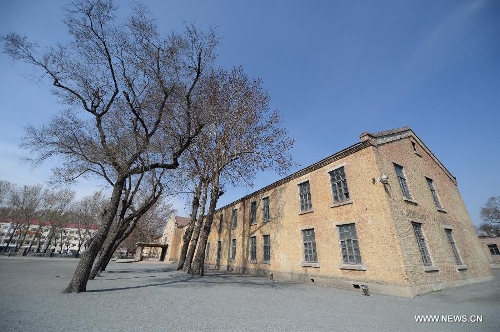
Photo taken on April 18, 2014 shows the site of the Unit 731 headquarter in Harbin, capital of northeast China's Heilongjiang Province. Unit 731 was a Harbin-based biological and chemical warfare research unit of the Japanese army during WWII. The Unit 731 facility ruins in Harbin are evidences of the wartime atrocities committed by Japanese invaders in China. Unit 731 members conducted a series of human experiments which subjected victims to vivisections, germ war attacks, weapon tests and other forms of torture. April 18 is the International Day for Monuments and Sites. Its theme for 2014 is "heritage for commemoration". (Xinhua/Wang Kai)
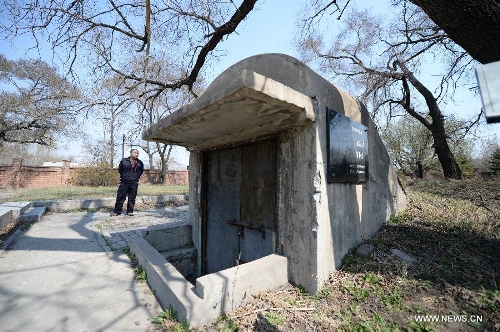
Photo taken on April 18, 2014 shows the ruins of an entrance to the animal breeding rooms of Unit 731 in Harbin, capital of northeast China's Heilongjiang Province. Unit 731 was a Harbin-based biological and chemical warfare research unit of the Japanese army during WWII. The Unit 731 facility ruins in Harbin are evidences of the wartime atrocities committed by Japanese invaders in China. Unit 731 members conducted a series of human experiments which subjected victims to vivisections, germ war attacks, weapon tests and other forms of torture. April 18 is the International Day for Monuments and Sites. Its theme for 2014 is "heritage for commemoration". (Xinhua/Wang Kai)
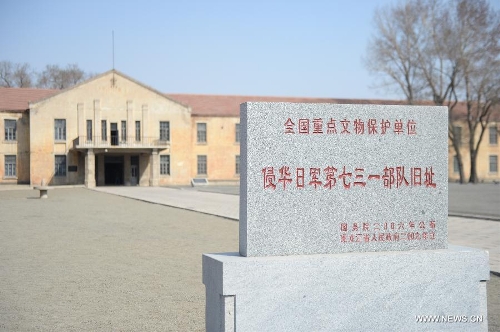
Photo taken on April 18, 2014 shows the site of the Unit 731 headquarter in Harbin, capital of northeast China's Heilongjiang Province. Unit 731 was a Harbin-based biological and chemical warfare research unit of the Japanese army during WWII. The Unit 731 facility ruins in Harbin are evidences of the wartime atrocities committed by Japanese invaders in China. Unit 731 members conducted a series of human experiments which subjected victims to vivisections, germ war attacks, weapon tests and other forms of torture. April 18 is the International Day for Monuments and Sites. Its theme for 2014 is "heritage for commemoration". (Xinhua/Wang Kai)
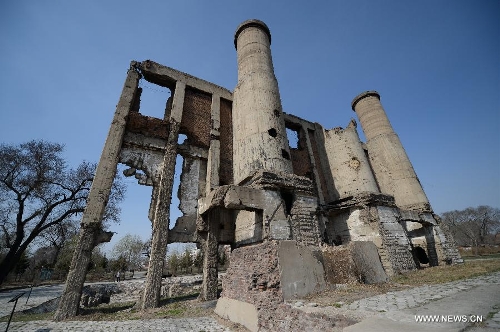
Photo taken on April 18, 2014 shows the ruins of a Unit 731 boiler building in Harbin, capital of northeast China's Heilongjiang Province. Unit 731 was a Harbin-based biological and chemical warfare research unit of the Japanese army during WWII. The Unit 731 facility ruins in Harbin are evidences of the wartime atrocities committed by Japanese invaders in China. Unit 731 members conducted a series of human experiments which subjected victims to vivisections, germ war attacks, weapon tests and other forms of torture. April 18 is the International Day for Monuments and Sites. Its theme for 2014 is "heritage for commemoration". (Xinhua/Wang Kai)
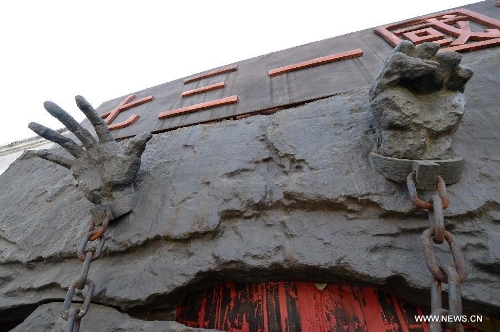
Photo taken on April 18, 2014 shows a sculpture at the Unit 731 ruins and sites in Harbin, capital of northeast China's Heilongjiang Province. Unit 731 was a Harbin-based biological and chemical warfare research unit of the Japanese army during WWII. The Unit 731 facility ruins in Harbin are evidences of the wartime atrocities committed by Japanese invaders in China. Unit 731 members conducted a series of human experiments which subjected victims to vivisections, germ war attacks, weapon tests and other forms of torture. April 18 is the International Day for Monuments and Sites. Its theme for 2014 is "heritage for commemoration". (Xinhua/Wang Kai)
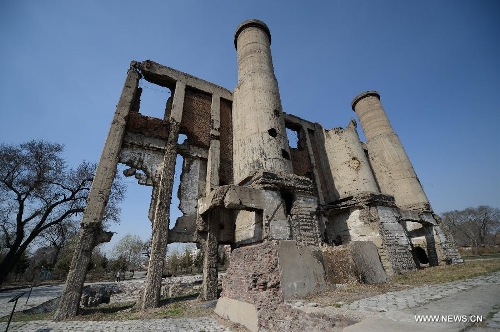
Photo taken on April 18, 2014 shows the ruins of a Unit 731 boiler building in Harbin, capital of northeast China's Heilongjiang Province. Unit 731 was a Harbin-based biological and chemical warfare research unit of the Japanese army during WWII. The Unit 731 facility ruins in Harbin are evidences of the wartime atrocities committed by Japanese invaders in China. Unit 731 members conducted a series of human experiments which subjected victims to vivisections, germ war attacks, weapon tests and other forms of torture. April 18 is the International Day for Monuments and Sites. Its theme for 2014 is "heritage for commemoration". (Xinhua/Wang Kai)
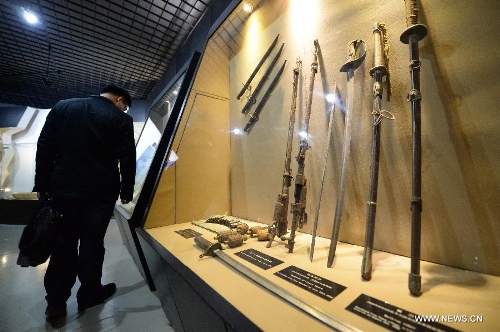
A man looks at weapons used by Japanese invaders at a museum on Unit 731 in Harbin, capital of northeast China's Heilongjiang Province, April 18, 2014. Unit 731 was a Harbin-based biological and chemical warfare research unit of the Japanese army during WWII. The Unit 731 facility ruins in Harbin are evidences of the wartime atrocities committed by Japanese invaders in China. Unit 731 members conducted a series of human experiments which subjected victims to vivisections, germ war attacks, weapon tests and other forms of torture. April 18 is the International Day for Monuments and Sites. Its theme for 2014 is "heritage for commemoration". (Xinhua/Wang Kai)
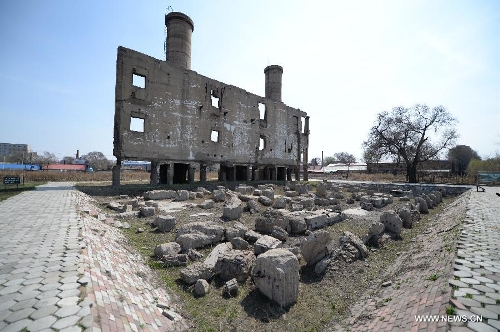
Photo taken on April 18, 2014 shows the ruins of a Unit 731 boiler building in Harbin, capital of northeast China's Heilongjiang Province. Unit 731 was a Harbin-based biological and chemical warfare research unit of the Japanese army during WWII. The Unit 731 facility ruins in Harbin are evidences of the wartime atrocities committed by Japanese invaders in China. Unit 731 members conducted a series of human experiments which subjected victims to vivisections, germ war attacks, weapon tests and other forms of torture. April 18 is the International Day for Monuments and Sites. Its theme for 2014 is "heritage for commemoration". (Xinhua/Wang Kai)
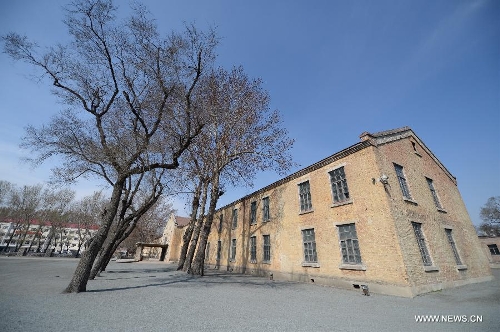
Photo taken on April 18, 2014 shows the site of the Unit 731 headquarter in Harbin, capital of northeast China's Heilongjiang Province. Unit 731 was a Harbin-based biological and chemical warfare research unit of the Japanese army during WWII. The Unit 731 facility ruins in Harbin are evidences of the wartime atrocities committed by Japanese invaders in China. Unit 731 members conducted a series of human experiments which subjected victims to vivisections, germ war attacks, weapon tests and other forms of torture. April 18 is the International Day for Monuments and Sites. Its theme for 2014 is "heritage for commemoration". (Xinhua/Wang Kai)